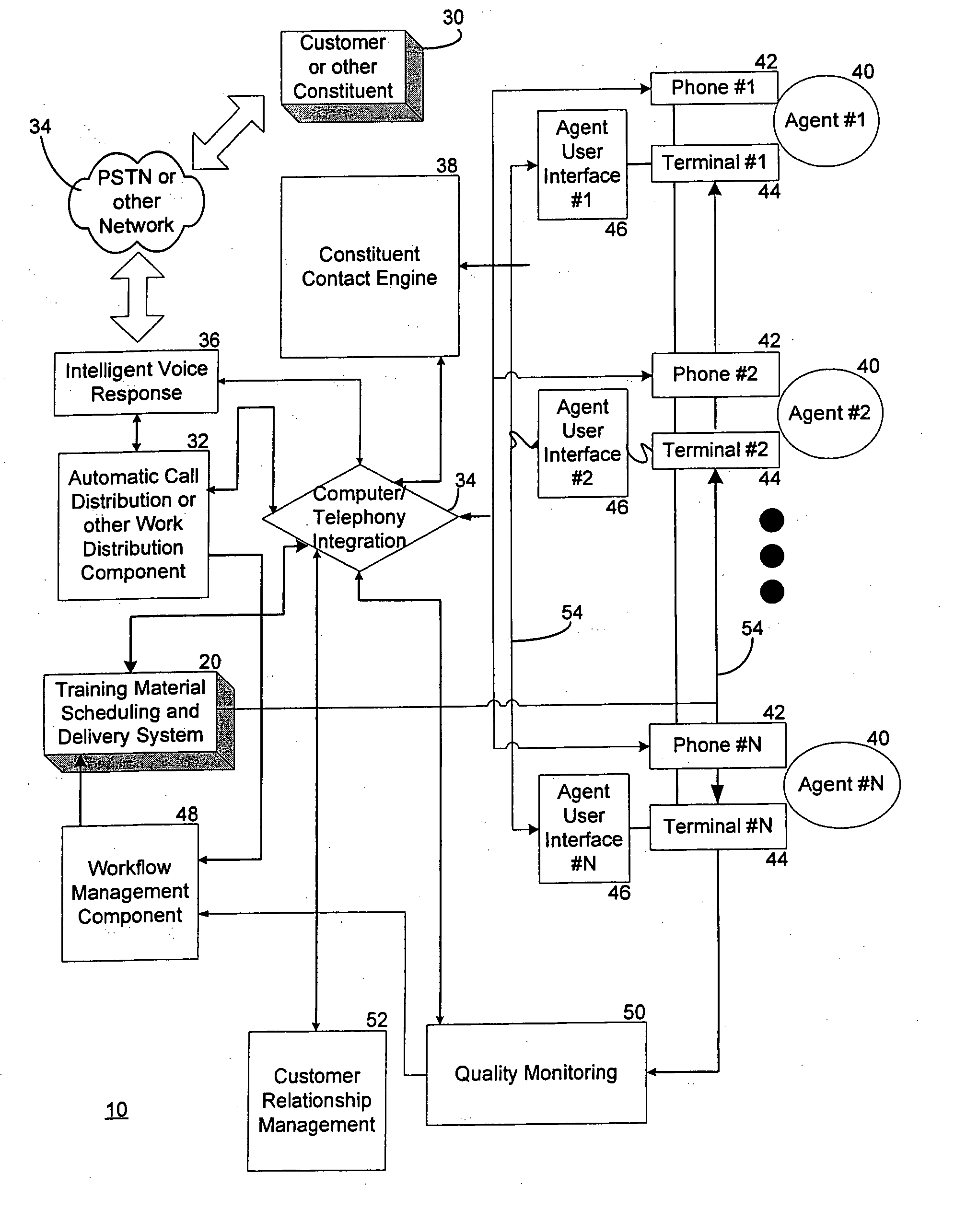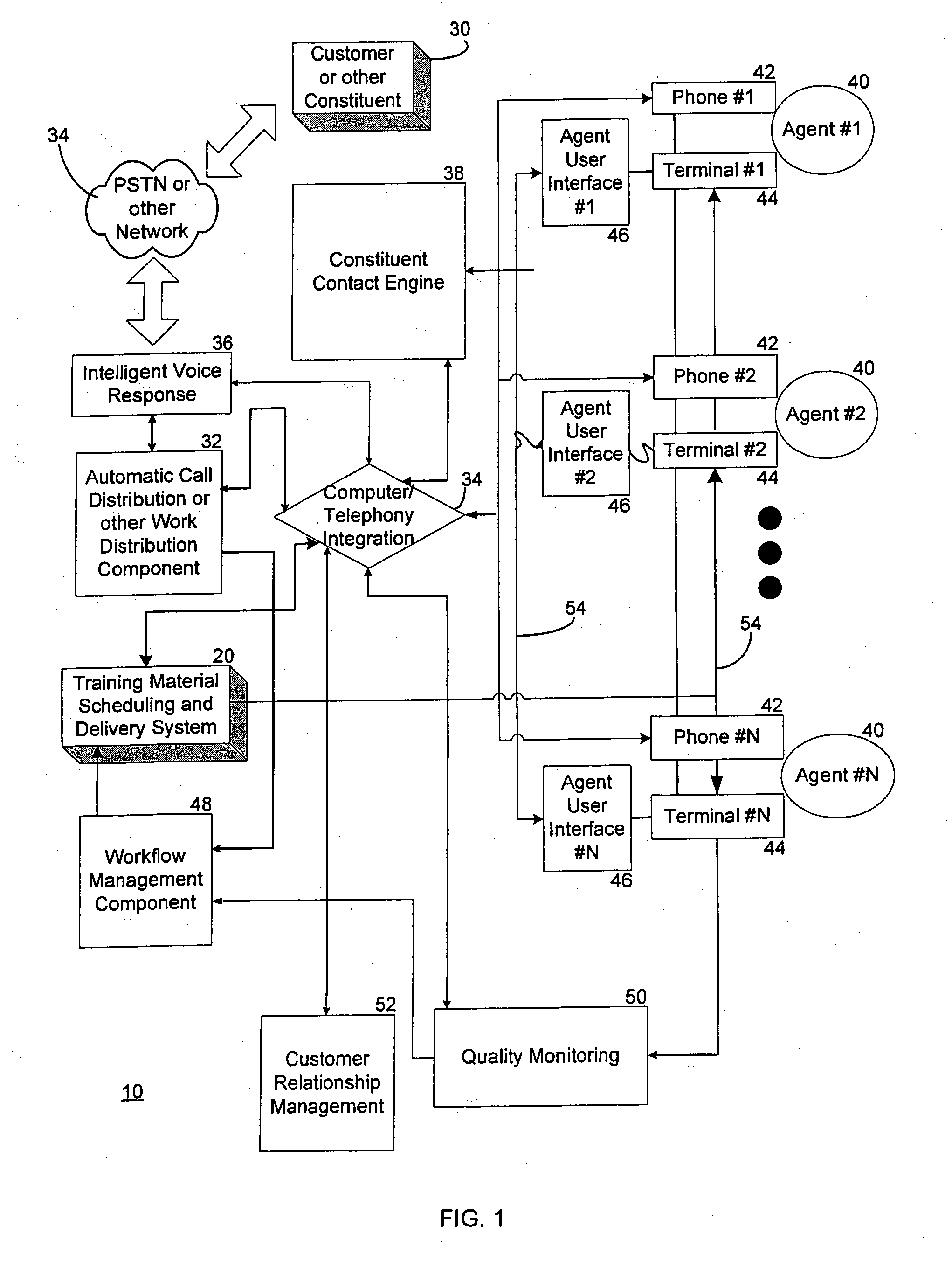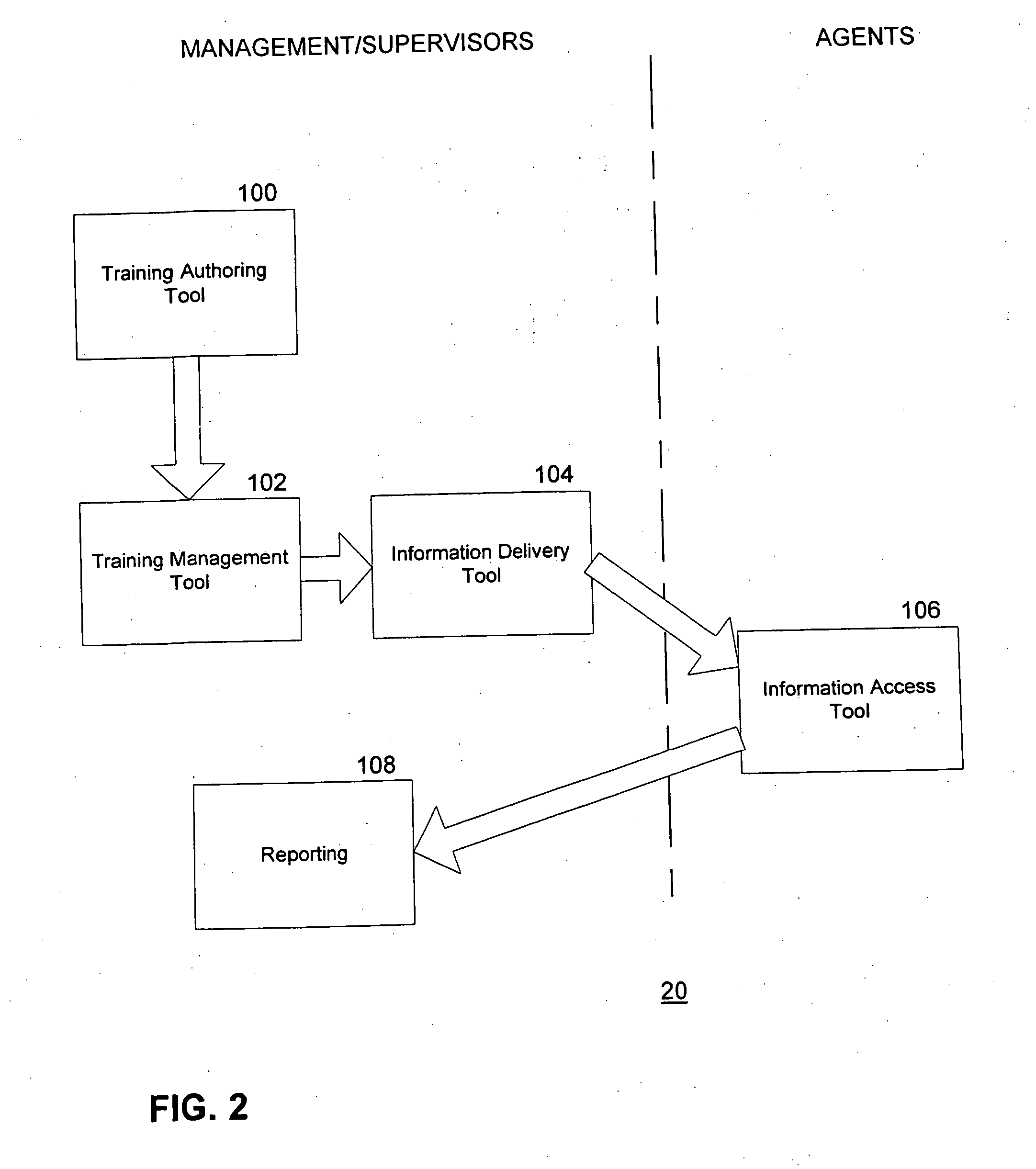Method and system for scheduled delivery of training to call center agents
a call center agent and training method technology, applied in the field of call centers, can solve the problems unable to centralized management and control of the call center, and the system cannot accommodate large variations in the learning rate or base knowledge of the agent, so as to achieve the effect of reducing the performance of the call center
- Summary
- Abstract
- Description
- Claims
- Application Information
AI Technical Summary
Benefits of technology
Problems solved by technology
Method used
Image
Examples
Embodiment Construction
[0017] Turning now to the drawings, in which like numerals indicate like elements throughout the several figures, an exemplary embodiment of the invention will now be described in detail. The present invention is directed to the scheduled delivery of content, such as training, to a constituent contact agent, such as a call center agent. Although the preferred embodiment of the invention will be described with respect to the delivery of training materials to an agent in a call center, those skilled in the art will recognize that the invention may be utilized in connection with the scheduled delivery of a variety of information in other operating environments.
[0018]FIG. 1 illustrates a computer system for managing a call center in which one advantageous embodiment of the present invention is implemented. A call center 10 includes a training system 20 operative to schedule and deliver training material to call center agents 40. In a typical application of the call center 10, a custome...
PUM
 Login to View More
Login to View More Abstract
Description
Claims
Application Information
 Login to View More
Login to View More - R&D
- Intellectual Property
- Life Sciences
- Materials
- Tech Scout
- Unparalleled Data Quality
- Higher Quality Content
- 60% Fewer Hallucinations
Browse by: Latest US Patents, China's latest patents, Technical Efficacy Thesaurus, Application Domain, Technology Topic, Popular Technical Reports.
© 2025 PatSnap. All rights reserved.Legal|Privacy policy|Modern Slavery Act Transparency Statement|Sitemap|About US| Contact US: help@patsnap.com



